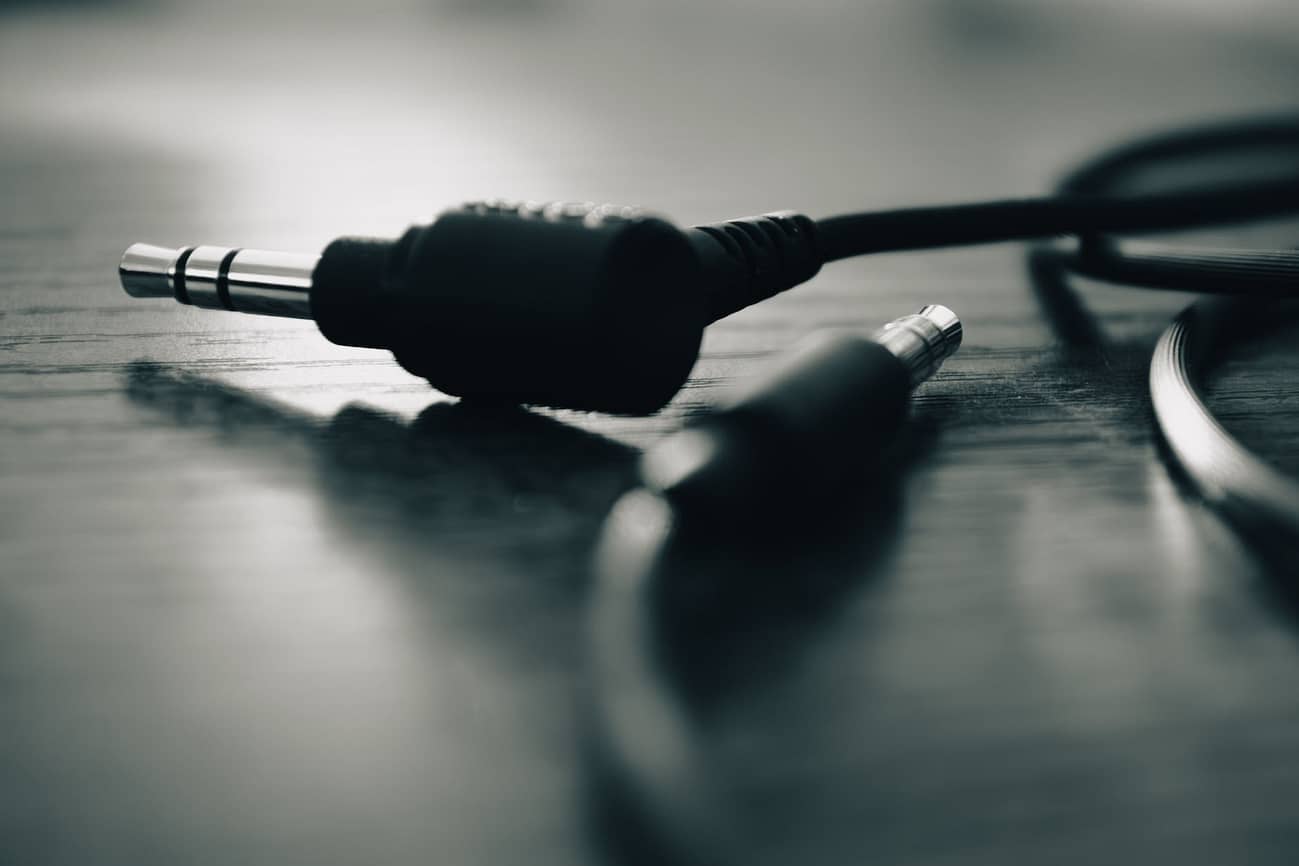In the realm of audio connectivity, few inventions have stood the test of time like the ubiquitous jack input cabling. From its inception over a century ago to its continued relevance in the modern era, the history of the jack cable is a testament to its versatility, durability, and enduring appeal. In this blog post, we will explore the evolution of jack input cabling and how it has been utilized in audio over the last couple of years.

The Birth of the Jack Connector: The jack connector owes its existence to the inventive spirit of C. K. Hutchison, an engineer who, in the late 19th century, sought to create a reliable electrical connector for telephone switchboards. In 1878, Hutchison devised the first version of the jack plug, which featured a cylindrical shape and two contact points. This design laid the foundation for the future evolution of the jack connector.
The jack connector, which comes in various sizes (most commonly the 6.35 mm or 1/4-inch and the 3.5 mm), has widespread applications across different industries due to its versatility and reliability. Some common applications include:
- Audio Equipment: Jack connectors are extensively used in the audio industry. They facilitate connections between musical instruments (electric guitars, keyboards, synthesizers) and amplifiers. They are also utilized in headphones, microphones, speakers, mixers, and other audio devices. The 3.5 mm jack is prevalent in consumer electronics like smartphones, tablets, laptops, and portable audio players for connecting headphones and external speakers.
- Studio Recording and Professional Audio: In recording studios, live sound setups, and stage performances, jack connectors are commonly used. They link musical instruments, microphones, and other audio gear to mixing consoles, amplifiers, and recording equipment.
- Telecommunications: In the realm of telecommunications, especially for landline phones, jack connectors are used to connect headsets and handsets to devices. Though wireless technologies have gained popularity, wired headsets with jack connectors remain in use, especially in call centers and offices.
- Medical Devices: In some medical devices, such as electrocardiogram (ECG) machines and certain diagnostic equipment, jack connectors are employed to attach sensors or electrodes, allowing for the transmission of vital signals.
- Computers and Peripherals: Jack connectors are utilized in computers for various purposes. The 3.5 mm audio jacks are often used for speakers, microphones, and headphones, while some audio interfaces and specialized peripherals may use larger jacks for higher-fidelity connections.
- Automotive Industry: In some vehicles, particularly older models, jack connectors were used for audio input/output connections. While the trend has shifted towards wireless and USB connectivity, some cars still have auxiliary inputs using jack connectors.
- DIY Projects and Prototyping: Jack connectors are sometimes used in DIY electronics projects or prototyping because of their ease of use and familiarity. They allow for quick and reliable connections in projects involving audio signals or even in non-audio related applications.
The 1/4-Inch Standard: The 1/4-inch jack connector emerged as the industry standard With its larger form factor, the 1/4-inch jack was primarily used in professional audio applications, such as amplifiers, musical instruments, and sound systems. Its robust construction and ability to handle high-quality audio signals made it a staple in the music industry.
Stereo and TRS: Stereo 1/4-inch TRS (Tip, Ring, Sleeve) jack was introduced afterwards. This innovation allowed for the transmission of stereo audio signals through a single cable, with the tip carrying the left channel, the ring carrying the right channel, and the sleeve serving as the common ground. The TRS jack became indispensable for headphones, mixing consoles, and other audio equipment, enabling the reproduction of spatial audio experiences.
Miniature Jacks and the 3.5mm Standard: As technology advanced, the demand for smaller, portable audio devices increased. To address this need, the miniature version of the jack connector, the 3.5mm jack, gained prominence. Initially developed for telephone switchboards, the 3.5mm jack found its way into consumer electronics, including Walkmans, portable CD players, and eventually, smartphones, tablets, and laptops. The 3.5mm jack became the de facto standard for personal audio devices, offering compatibility and ease of use.
: In recent years, the jack connector has faced challenges in an increasingly wireless-centric world. With the advent of Bluetooth and other wireless technologies, audio devices have embraced the freedom of cable-free connections. Smartphones and laptops began omitting the 3.5mm jack, favouring wireless audio solutions. Despite this shift, the jack connector remains prevalent in professional audio equipment, studio setups, and many consumer devices, including high-fidelity headphones and musical instruments.

Revival and Adaptation: Interestingly, the audio industry has witnessed a revival of the jack connector in some unexpected ways. Manufacturers have released hybrid devices that combine wireless capabilities with the inclusion of a 3.5mm jack. This hybrid approach caters to users who prefer the convenience of wireless audio while ensuring compatibility with legacy devices and providing the option for higher-quality wired connections.
The future of the jack connector remains uncertain, as technological advancements continue to shape the audio landscape. However, its long-standing presence and adaptability indicate that it will likely maintain its relevance in the years to come. As new devices and connectivity options emerge, manufacturers are finding ways to incorporate the jack connector alongside wireless capabilities, ensuring compatibility and catering to a diverse range of user preferences.
Different types of cables, such as coaxial, optical, USB, and various audio cables (like RCA, XLR, and TRS) serve different purposes and transmit audio signals using distinct methods. The primary distinctions between these cables may affect various aspects of sound quality, such as fidelity, interference, and signal transmission. Here’s an overview of these differences:
- Coaxial Cables: Coaxial cables are often used for digital audio transmission. They carry electrical signals and can be susceptible to interference. The quality of the materials used in the cable’s construction, the cable’s length, and the shielding can affect the sound quality. In general, these cables can transmit high-quality audio if they are well-constructed and shielded against interference.
- Optical Cables (Toslink): Optical cables transmit digital audio using light signals. These cables are less susceptible to interference since they transmit data optically. They’re often used for connecting devices like TVs, CD/DVD players, and soundbars. The sound quality generally remains consistent across various optical cables, as long as the cables themselves are of good quality.
- USB Cables: USB cables are commonly used for digital audio transmission and are frequently used for connecting external audio interfaces, DACs (Digital-to-Analog Converters), and other devices to computers or smartphones. The sound quality can vary based on the quality of the components within the devices and the quality of the cable’s construction.
- Analog Audio Cables (RCA, XLR, TRS): Analog audio cables like RCA, XLR, and TRS are used to transmit analog audio signals. The sound quality can be influenced by factors such as the quality of the conductor materials, cable length, shielding, and overall construction. Higher-quality cables with better shielding and superior materials can reduce interference and potentially improve the overall sound quality.
For most users and within reasonable quality ranges, the choice of cable might have a minimal impact on sound quality, especially when compared to other factors like the quality of the audio source, the playback equipment, and the listening environment. However, higher quality cables are designed to reduce interference and potential signal degradation, which might be more critical in professional audio applications or high-fidelity setups.

Leave A Comment